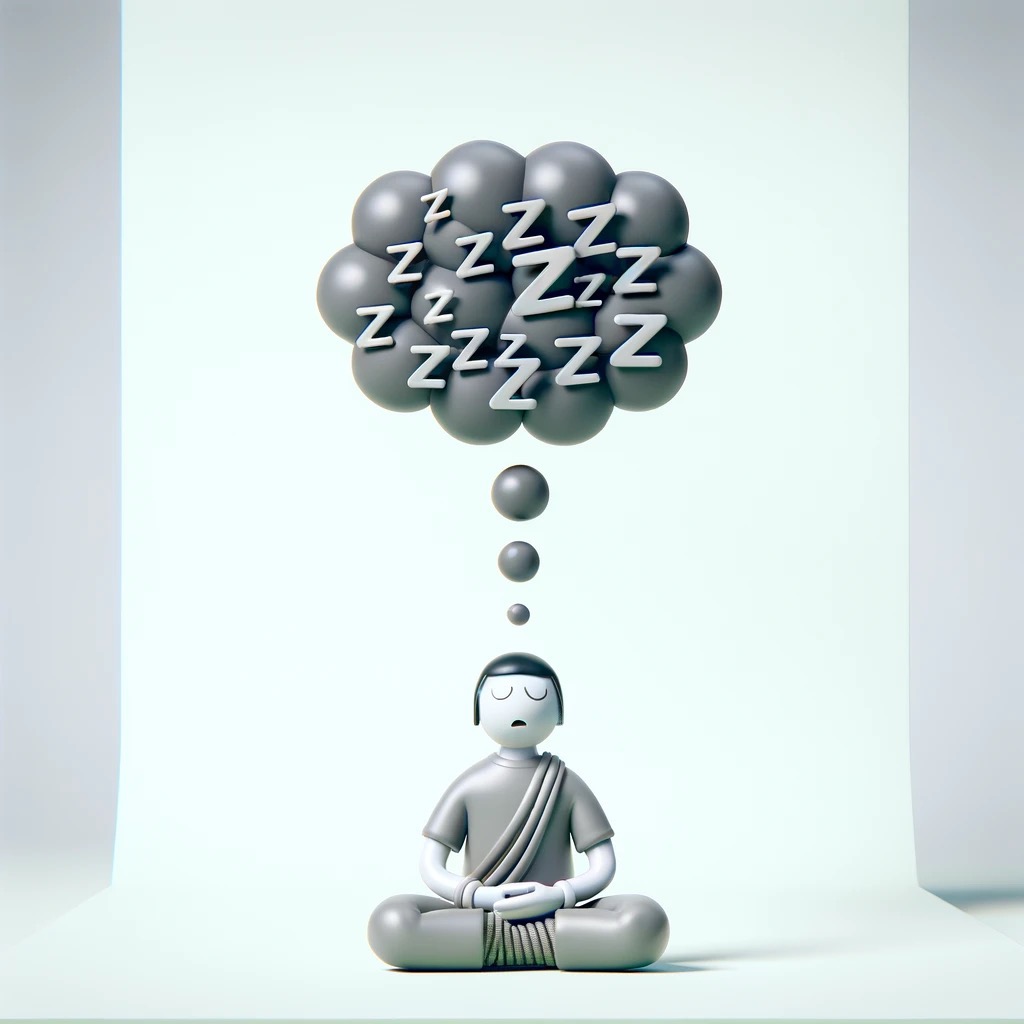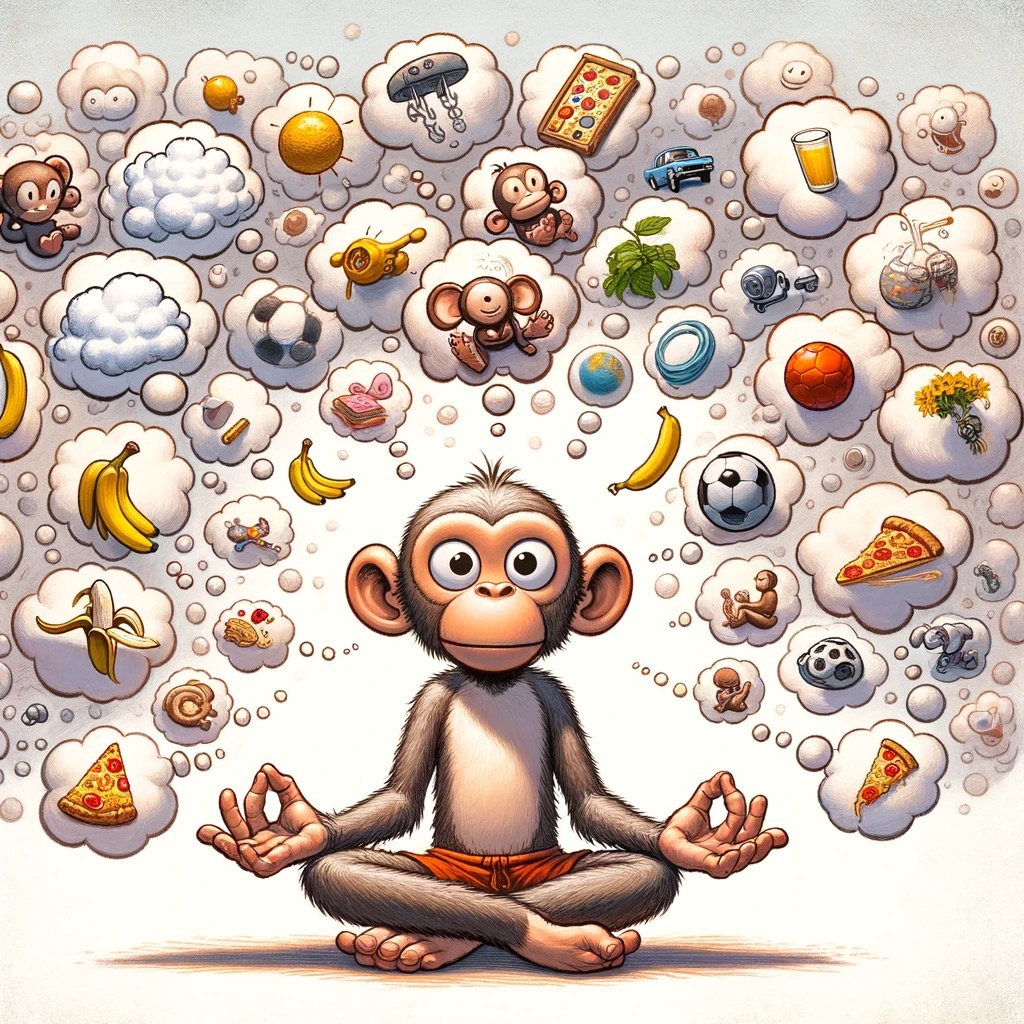An insightful look into how the classical obstacles of Buddhism relate to modern challenges in meditation and mindfulness.
Most people’s minds are a jumble of disturbing thoughts, moods that rise and fall like waves in stormy seas, and high levels of anxiety. This is not a failing; it’s the natural human condition.
Peace of mind is the opposite, and it’s only obtained through effort, concentration, and application of the opponents to mental disturbance.
Peace of mind, often associated with practices like meditation, mindfulness, and other forms of stress management, brings a multitude of practical benefits that can significantly enhance one’s quality of life.

Benefits of a peaceful mind
Though it seems intuitively obvious that peace of mind is preferable to a disturbed mind, most people don’t realize the practical benefits, so they lack the motivation to try to obtain it.
Peace of mind will improve physical health by reducing chronic stress, which is linked to numerous health issues, including heart disease, hypertension, and weakened immune function.
Peace of mind contributes to reduced levels of anxiety, depression, and other mental health challenges, instead cultivating a state of well-being and contentment, making it easier to cope with life’s ups and downs. A disciplined mind is less subject to the ups and downs or irrational exuberance or spiraling despair.
Peace of mind improves the quality of sleep, making it easier to fall asleep and stay asleep throughout the night. A disturbed mind demands energy and attention at all hours of day and night.
Peace of mind improves concentration and focus, leading to increased productivity and the ability to handle complex tasks with greater ease. Competing thoughts, particularly disturbing ones, impair judgement, and slow the processing of routing mental tasks.

Peace of mind allows for clearer thinking and better judgment, leading to more effective decision-making.
Peace of mind clears away the mental clutter, allowing for the free flow of creative ideas and fosters an environment where imagination can flourish, potentially leading to innovative solutions and artistic expressions.
Peace of mind enhances emotional intelligence and empathy, leading to better communication and healthier relationships. A peaceful mind naturally focuses on the needs and wants of others because attention on the self is not required.
Peace of mind increases one’s ability to handle stress and recover from adversity. It fosters a positive outlook and a stronger sense of inner strength, making it easier to bounce back from challenges.
A peaceful mind is a powerful mind.
Peace of mind is closely linked to higher levels of happiness and life satisfaction. It allows individuals to enjoy the present moment, appreciate life’s pleasures, and cultivate a sense of gratitude.

Concentration, Meditation, and Peace of Mind
In order to obtain peace of mind, one must gain a degree of control over one’s attention, learn mental discipline, and embark on a regular meditation practice. All this requires concentration.

Mindfulness Meditation Mastery: A Journey to Observing, Directing, and Sustaining Mental Focus

Meditation Unleashed: Going Beyond Mindfulness for Greater Insight and Transformation
The five hindrances to peace of mind
In Buddhism, distractions from concentration are often referred to as the “Five Hindrances” (Pāli: pañca nīvaraṇāni). These hindrances are considered obstacles to meditation and the development of concentration (samādhi) and insight (vipassanā) which leads to peace of mind. Overcoming these hindrances is crucial for attaining and sustaining peace of mind.
- Sensual Desire (kāmacchanda): Attachment to pleasing sights, sounds, smells, tastes, and physical sensations.
This hindrance is about the craving for sensory pleasures, which distracts the mind from the meditative focus and pulls it towards external objects of desire.
Have you ever tried to meditate and found yourself instead indulging in sexual fantasy, mentally shopping for your next car, or dreaming about some wonderful vacation? That’s a problem. A very common one.

- Ill Will (vyāpāda): Also known as aversion or malice, this refers to negative feelings towards others or oneself, including anger, resentment, hostility, bitterness, and even subtle forms of annoyance.
Ill will distracts from concentration by filling the mind with unwholesome thoughts and emotions.
Have you ever experienced what Eckhart Tolle calls a pain body episode? It happens when some event upsets you, and then one thought triggers another, setting off a chain reaction of emotionally charged thoughts that take over. It’s nearly impossible to meditate when the pain body is in control.
- Sloth and Torpor (thīna-middha): This hindrance combines physical lethargy or sluggishness (thīna) with mental dullness or lack of clarity (middha).
It manifests as a lack of energy or enthusiasm for practice, leading to drowsiness, sleepiness, and an inability to focus the mind.
Have you ever sat down to meditate and fallen asleep, or become so drowsy that you lost all awareness of what’s transpiring in your mind?
It’s perhaps the most common problem in meditation, particularly since we tend to practice with our eyes closed sitting motionless.

- Restlessness and Remorse (uddhacca-kukkucca): Restlessness (uddhacca) is a state of agitation or anxiety where the mind cannot settle; it flits from thought to thought without focus. Remorse (kukkucca) involves regret over past actions or anxiety about the future. Together, they prevent the mind from becoming still and concentrated.
Most beginning meditators experience “Monkey Mind,” the awareness of the cacophony of thoughts ordinarily relegated to the subconscious mind. Without mental disipline and concentration, attention will drift from one thought to another, generally following the path of highest emotional charge. This is also why pain body episodes are so distracting.

- Doubt (vicikicchā): Skepticism or uncertainty about the Buddha, his teachings (Dharma), the monastic community (Sangha), or one’s own ability to follow the path.
Doubt can paralyze practice by making one hesitant to commit fully to meditation or to following the teachings.
Most beginning meditators suffer from doubt in their ability to accomplish the task. Many observe the chaos of Monkey Mind and conclude they simply can’t meditate.
This is sad because it’s simply not true. Meditation requires no special ability.
Overcoming hindrances to peace of mind
Overcoming these hindrances involves a variety of practices and techniques, including mindfulness, ethical conduct, understanding the impermanent nature of experiences, and developing wisdom and compassion.
As practitioners work through these obstacles, their ability to concentrate improves, leading to deeper states of meditation and progress on the path to enlightenment and attaining peace of mind.
The quest for peace of mind often involves self-reflection and mindfulness practices that can lead to profound personal growth and self-discovery. It encourages individuals to explore their thoughts, emotions, and behaviors, fostering a deeper understanding of themselves and their place in the world.

